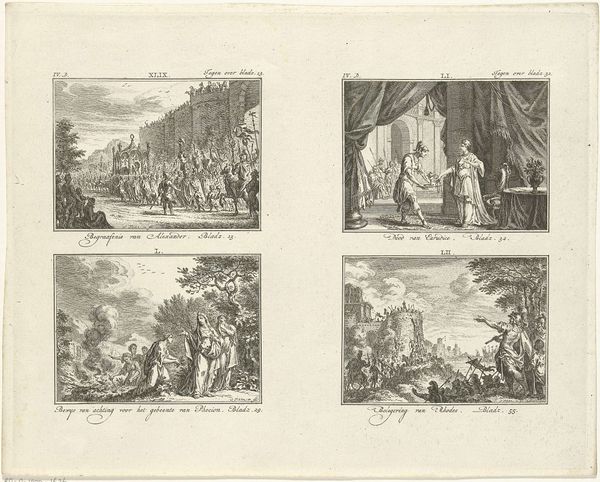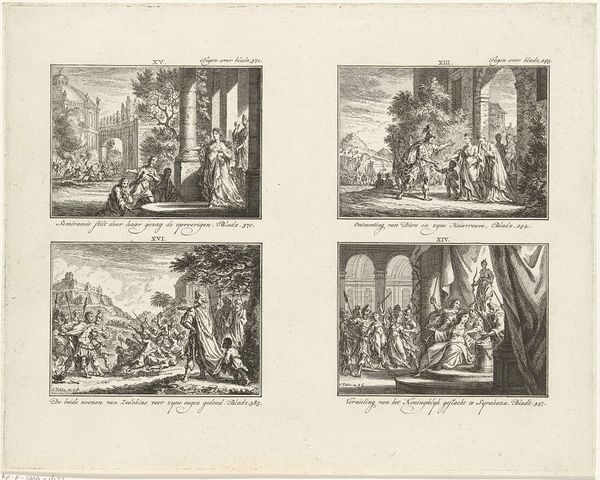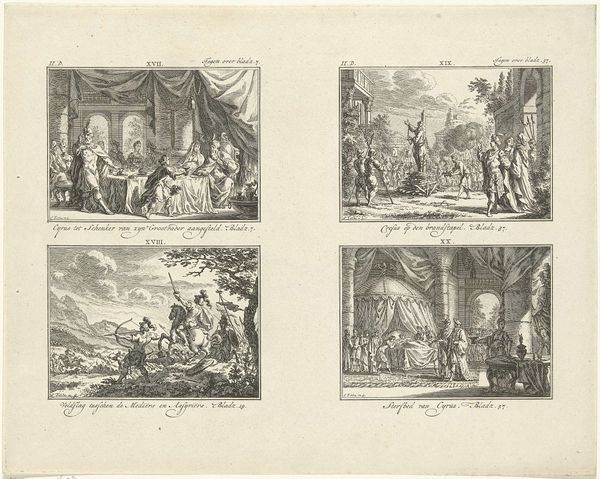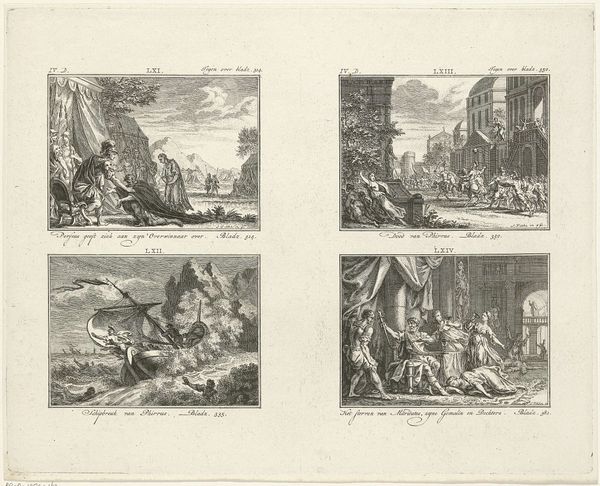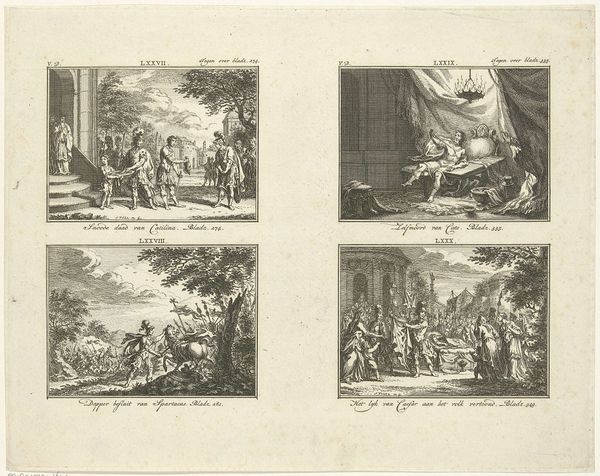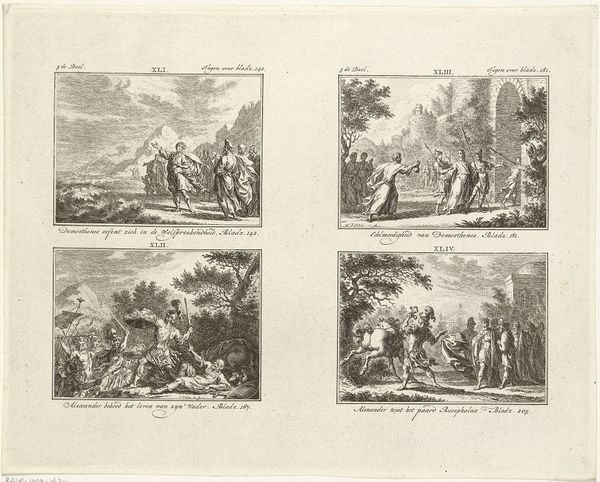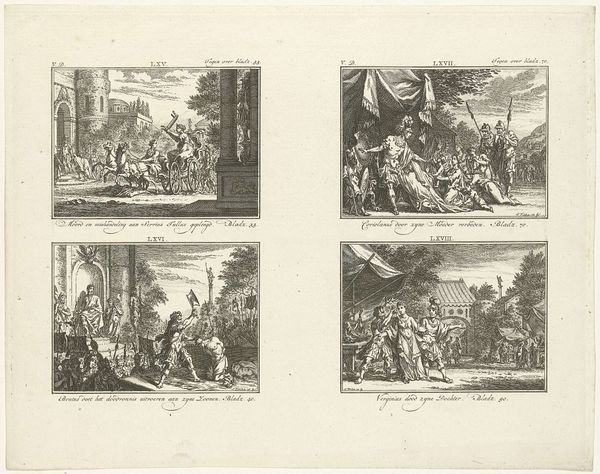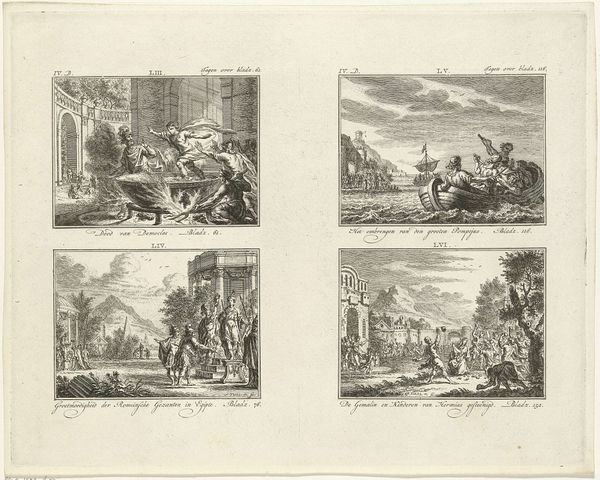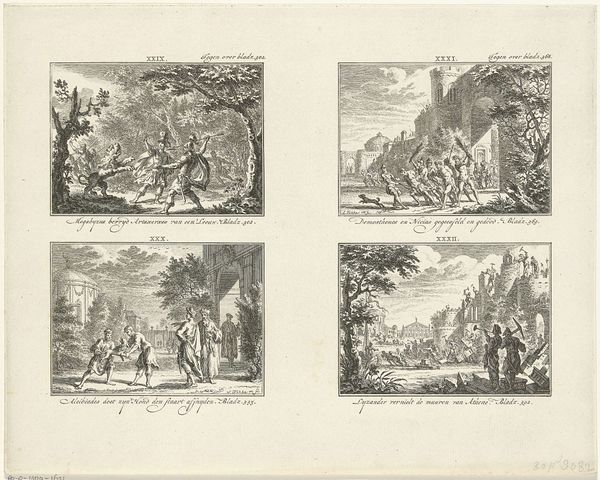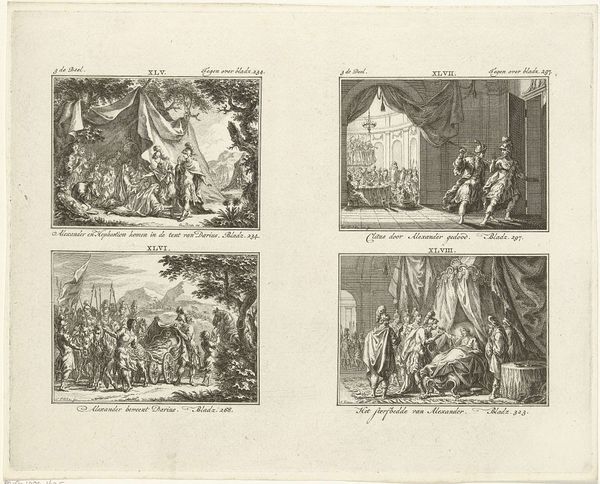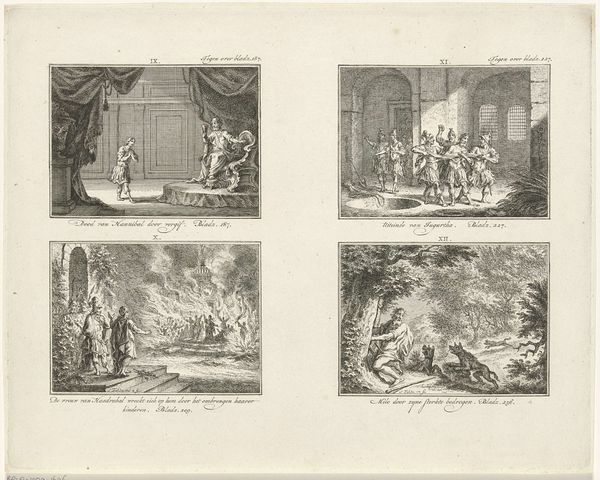
print, engraving
#
baroque
# print
#
old engraving style
#
history-painting
#
academic-art
#
engraving
Dimensions: height 221 mm, width 283 mm
Copyright: Rijks Museum: Open Domain
Curator: At first glance, it feels rather dense with activity, like a stage set filled with figures caught in mid-action. The composition, with its four distinct vignettes, offers an interesting approach to storytelling. Editor: It does feel theatrical. The subjects appear to be striking poses as if frozen for a performance. These engravings by Simon Fokke, created sometime between 1722 and 1784, are entitled "Vier voorstellingen uit de klassieke geschiedenis," which translates to "Four Scenes from Classical History." Curator: Each panel overflows with classical symbolism, doesn't it? Take the robes, gestures, architectural backdrops; all heavily referencing a Roman aesthetic. Editor: And all reinforcing a dominant narrative about civic virtue. Looking closer at these vignettes, each presents a tale steeped in idealized masculinity and patriotic sacrifice. It feels didactic, intended to shape a specific moral perspective. Curator: Undoubtedly. Engravings like these were critical visual tools in the Baroque era for disseminating classical narratives. Consider the lower-left panel. That central figure, flanked by what looks like a tented army encampment, might refer to military preparedness, valor on the battlefield. Editor: Which could potentially glorify the violence necessary for imperial expansion. It makes me consider what other, marginalized histories were purposefully omitted through this specific artistic focus. These romanticized versions were weaponized as effective nation-building propaganda. What social class did it mostly benefit? Curator: I agree. I would consider them complex documents that hold cultural weight across time, but your perspective urges us to examine this work beyond its immediate beauty and historical context, challenging us to consider the politics of representation. Editor: Exactly! Recognizing those undercurrents is precisely how we give these artworks new life in contemporary discourse. Ultimately, how they resonate– or clash– with modern sensibilities helps us engage in deeper reflection about the historical biases and potential progress of our social ideals.
Comments
No comments
Be the first to comment and join the conversation on the ultimate creative platform.
